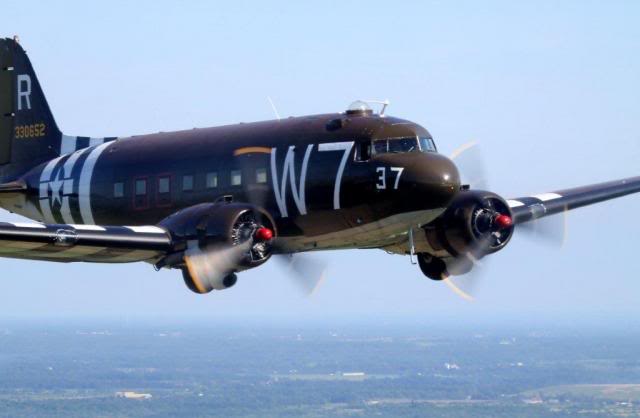Whiskey 7, a Douglas C-47 transport plane from WWII, is being temporarily removed from the National Warplane Museum, set to once again unleash a storm of paratroopers in Normandy. This time, however, the D-Day invasion is a distant memory rather than a horrific reality. The “mission” is something more reminiscent of a re-enactment, celebrating the 70th anniversary of the invasion which came to be known as one of the more devastating events in the Second World War.
Not only is Whiskey 7 one of the few transport planes from D-Day still able to fly, but it was also important to the WWII effort as it dropped some of the first soldiers into the fray. There are, however, other aircrafts from WWII set for involvement in the ceremony. The event should be a rush for many of the people involved, as some of the jumpers taking part have been retired for a long time.
The transport plane will be flying to more than Normandy, making at least five nonstop appearances on the way. This task will present itself as challenging for the pilot, as the aircraft is expected to be in the air for at least 25-35 hours, possibly more. Luckily, the airborne relic from WWII is in good condition, having been repaired extensively since its induction to the museum. The restoration has already seen an expense of around $180,000 with the museum planning to raise a quarter of a million more before the Normandy trip. One of the few actual upgrades made was the implication of GPS to avoid a need for dead reckoning, the Boston Herald reports.
Five pilots will take turns at the cockpit over the course of the long flight. They are as excited as they are anxious, knowing that flying Whiskey 7 will not be like flying more modern planes. At the very least, they will be less nervous than the WWII troopers who saw battle on D-Day, who were crammed together in the transport plane with over 100 pounds of gear on each of their persons.
While the engines may still be loud and the flight may still be long, the sense of impending death is no longer an impregnable presence. This time around, a sense of victorious mirth will pervade the interior of the transport plane as several men and women band together to celebrate one of the greatest achievements of that dark day in WWII, when Allied troops showed their ability to survive against all odds.
//
